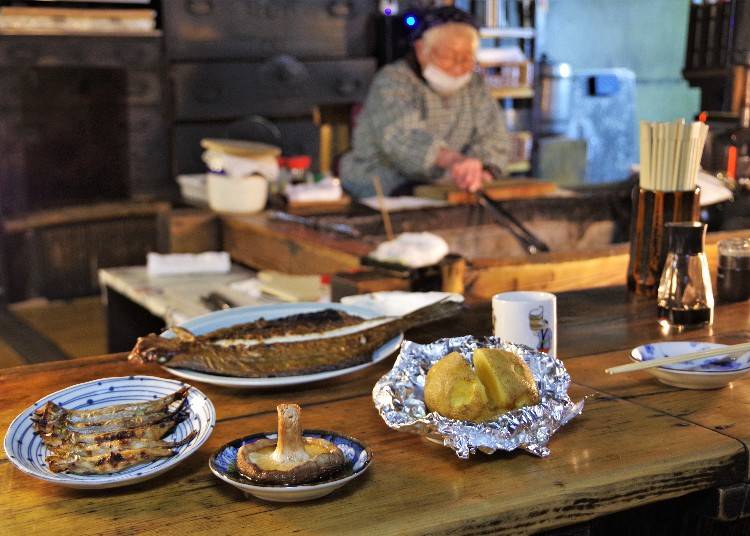
Robatayaki is a Japanese cooking method where ingredients are grilled in front of restaurant guests. Translated directly as "fireside-cooking," robatayaki is said to have originated in Sendai City in the Tohoku region.
Once it reached Kushiro City in eastern Hokkaido, a region rich in seafood, it spread throughout Japan.
Here, we look at the long-established robatayaki restaurant, Robata, in Kushiro City to explore the history of robatayaki and how it is served.
What is "Robatayaki" ?

Robatayaki is a Japanese cuisine in which seafood and vegetables are grilled on an Irori (a traditional Japanese hearth) surrounded by the guests. Also called a Ro (furnace), an Irori is where the cooking staff grills up ingredients and warms up sake on a charcoal barbecue.
The name “Robata” (炉端) comes from being on the edge ("Taba”; 端) of the furnace ("Ro"; 炉). So, the style of eating at the edge of a hearth became known as “Robata.” That then led to “yaki” (grilled) items by the hearth, and with it, the name Robatayaki.
Buildings and interiors of Robatayaki establishments are often built in a traditional Japanese style.
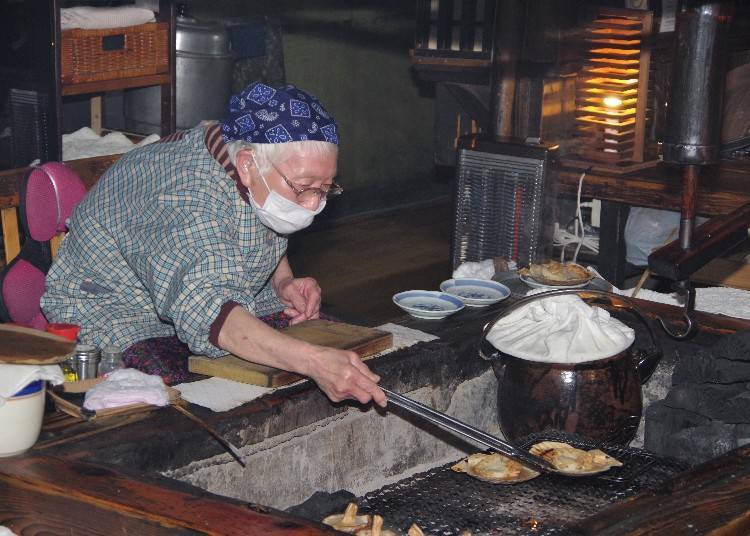
However, different restaurants use different styles. Some grill the food surrounded by guests and even heat up sake in the Irori. Others grill it in the kitchen, while others allow the guests to grill the food themselves.
If only sake is being heated, it is sometimes referred to as just "Robata," and if the guests are grilling for themselves, it is sometimes called a "kaisen barbecue" (seafood barbecue).
How Robatayaki made a name for itself in Kushiro
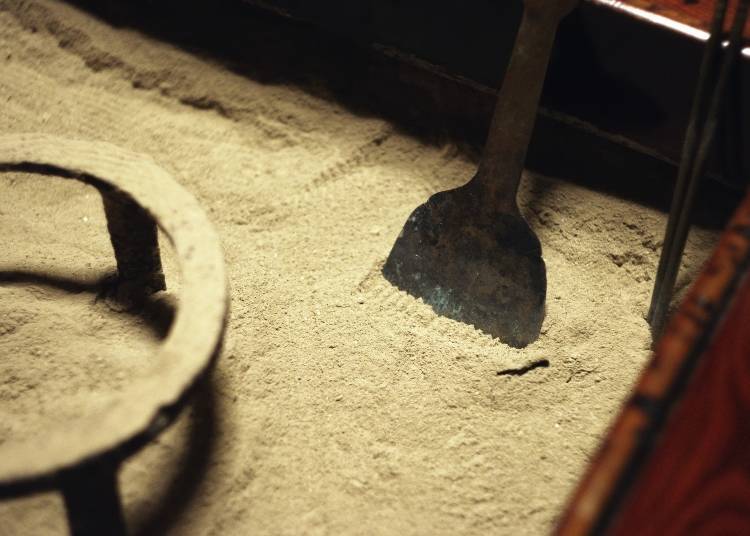
There are various stories about the origins of Robatayaki. Some say it originated in Sendai City, Miyagi Prefecture, while others point to Kushiro City, Hokkaido, as its origin.
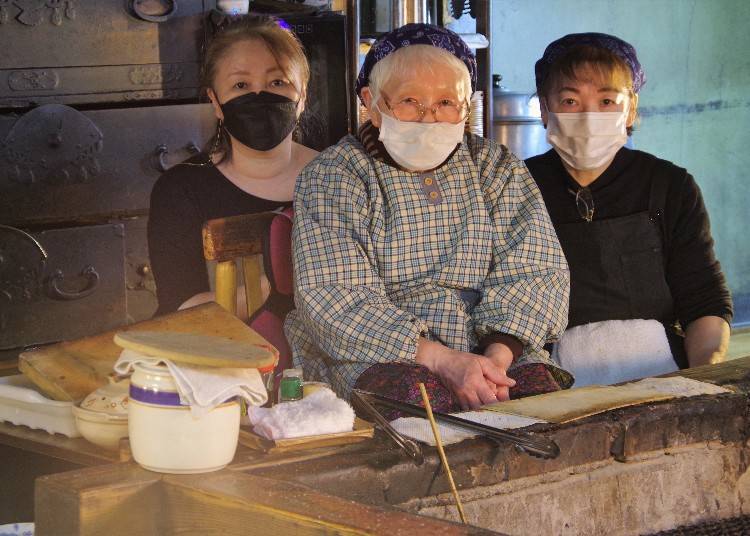
According to everyone at Robata, the restaurant opened in around 1953. It was a time when Kushiro City was booming as a fishing town. The founder of Robata was inspired by a story of a quirky restaurant in Sendai City that warmed up sake in an Irori and served local cuisine prepared in the back.
Wanting to serve freshly grilled fish from Kushiro, the founder decided to serve the food in a style surrounded by Irori where you can see the food being grilled right in front of you.
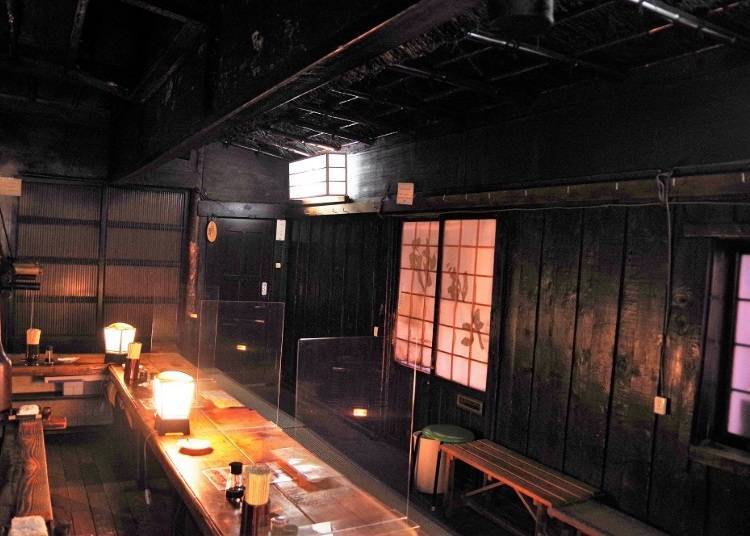
When Robata opened in Kushiro, it was mainly used as an entertainment venue for local celebrities. Such highly esteemed customers came from Hokkaido and beyond to taste the high-quality Kushiro seafood so readily available to Robata.
It is thought that so many competitors popping up in Kushiro, then later in other parts of Japan, including Sapporo, is because of the notable demand and popularity of this restaurant. These days, it's well-established as one of Hokkaido's rich seafood specialties.
What's the difference between Yakitori and Robayataki?
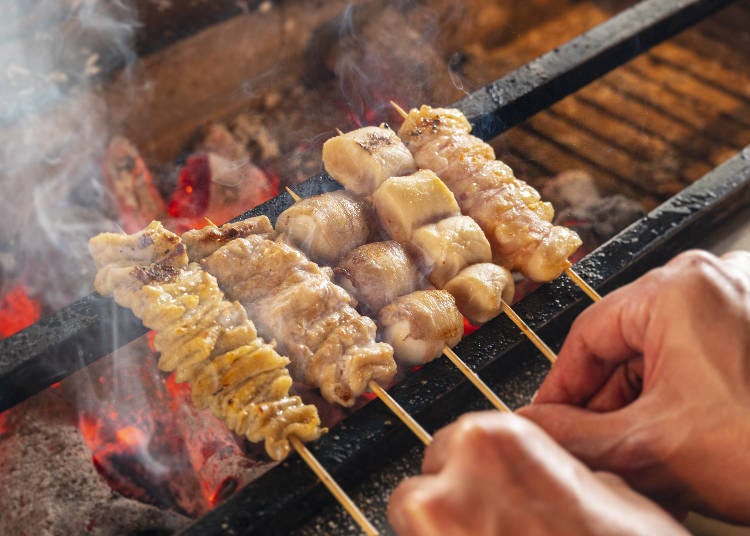
In Japan, there is another charcoal-grilled dish called yakitori, but it is considered entirely separate from Robatayaki. Yakitori is made by putting bite-sized pieces of chicken onto a bamboo skewer and grilling them on a charcoal grill, or barbecue.
Food is seldom considered “yakitori” unless put on a skewer. The main ingredient is usually chicken (as the "tori" part would suggest), but pork is also often used in Hokkaido.
However, for Robatayaki, although some items may indeed be grilled on a skewer, it is by no means an essential part of the process. One of the main differences between the two is also the contents of the dish itself.
Although it's not uncommon to see meat such as chicken in Robatayaki, the main ingredients are usually seafood and vegetables.
What kind of ingredients do you use in Robatayaki?
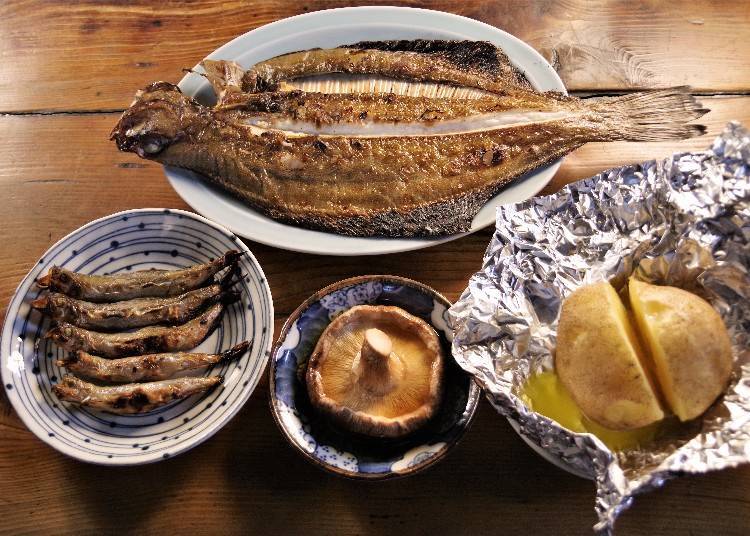
Seafood and vegetables are the main ingredients used in Robatayaki, but some places also use meat. The specific types vary by region and store, and you'll often find seasonal ingredients and regional specialties being served.
Some of the most common seafood ingredients you might find are:
・Scallops
・Oysters
・Shrimp
・Squid
・Okhotsk Atka mackerel (a regional mackerel)
・Righteye flounder
・Shishamo smelt
・Pacific saury
・Salmon
And some of the common vegetables you might find are:
・Eggplant
・Shiitake mushrooms
・Peppers
・Asparagus
・Potatoes
As we've mentioned, some restaurants might also offer meat such as pork and chicken, but they might also provide items that you don't need to put on the grill, such as soups, stews, and rice.
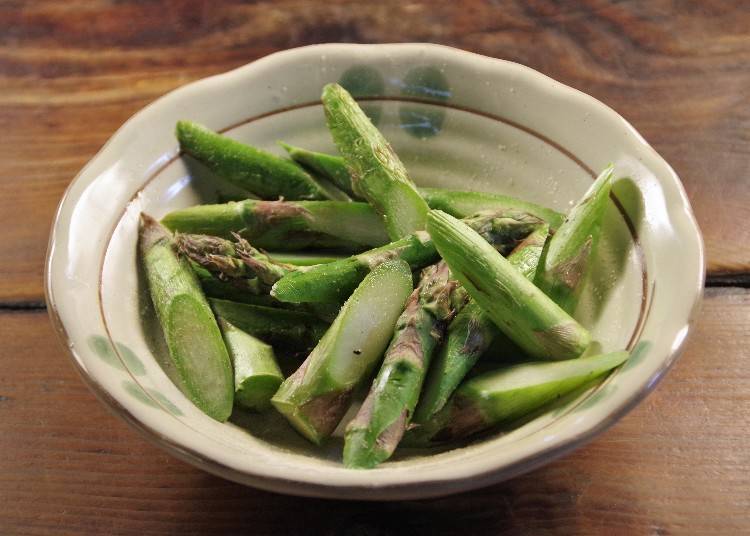
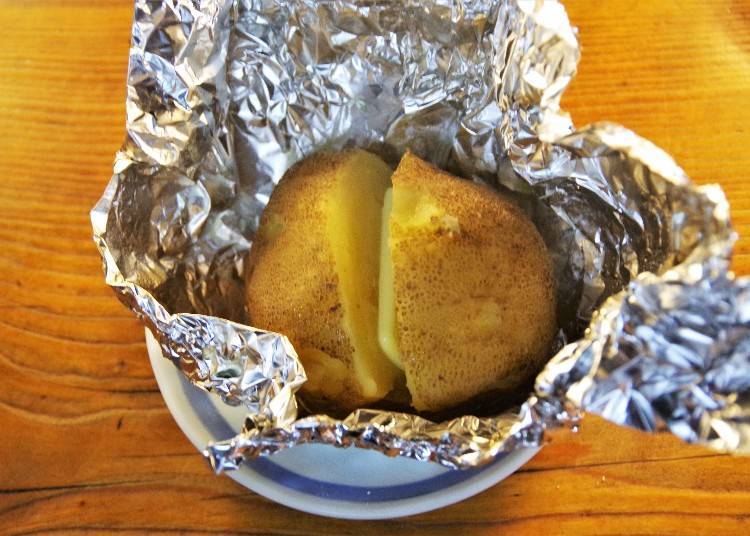
At Robata, the main ingredients you'll find on offer are local Kushiro seafood and vegetables.
Since no frozen ingredients are used, the menu options vary from season to season. For example, around April is the best time for fatty salmon, whereas from June to August, you'll find "shimba-ebi" shrimp that are full of flavor. September onwards is the time for pacific saury, and November onwards is best for shishamo smelt.
These are just some of the tasty seasonal ingredients that Robata offers. Although the majority of the vegetables are on offer year-round, you'll find that their sweetness and vibrance are highlighted in their best seasons. As for the meat, Robata also offers a type of venison known as Yezo Sika, or Hokkaido Sika (pronounced 'sheeka').
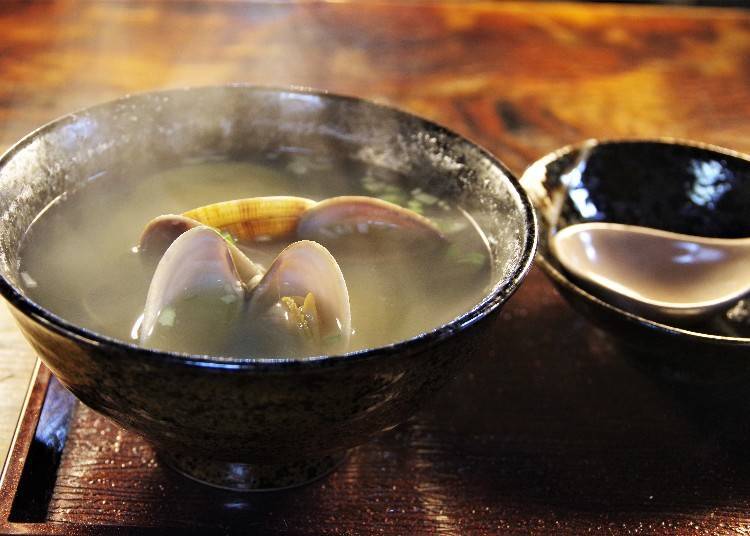
Alongside their delicious Robatayaki dishes, some of their other popular menu items include the dishes with incredibly fresh raw fish, such as the Sashimi Assortment (刺身盛り合わせ), Salmon Roe Rice Bowl (イクラ丼), and their Ochazuke (green tea rice bowl; お茶漬) that uses whole slices of salmon. The Sake Steamed Clams (アサリの酒蒸し) are also popular.
Robata Explains: What’s it like to order Robatayaki?
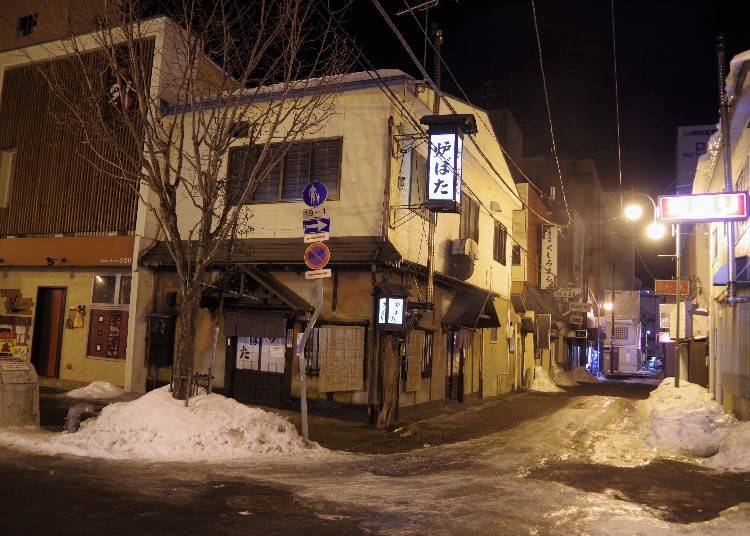
Restaurants differ in the exact way to eat and order Robatayaki, but we'll show you how it's done at Robata.
But before you even get down to visiting the restaurant, it's a good idea to reserve your seats in advance, because Robata is a popular restaurant, and a full house is not uncommon. The official website and booking system are available in Japanese, English, Chinese, and Korean.
Now for the fun part. As you open the traditional sliding doors known as Shouji, you'll be welcomed by the profound beauty associated with Japan's traditions and time-worn architecture. Everything from the walls and ceilings to the tables and chairs are all made of wood using an ancient Japanese architectural style.
Look out for the antique decorations, too, such as the hanging wall clock, armoire, and elegant tableware. Even those familiar with Japanese architecture and interiors will find themselves reaching for their cameras.
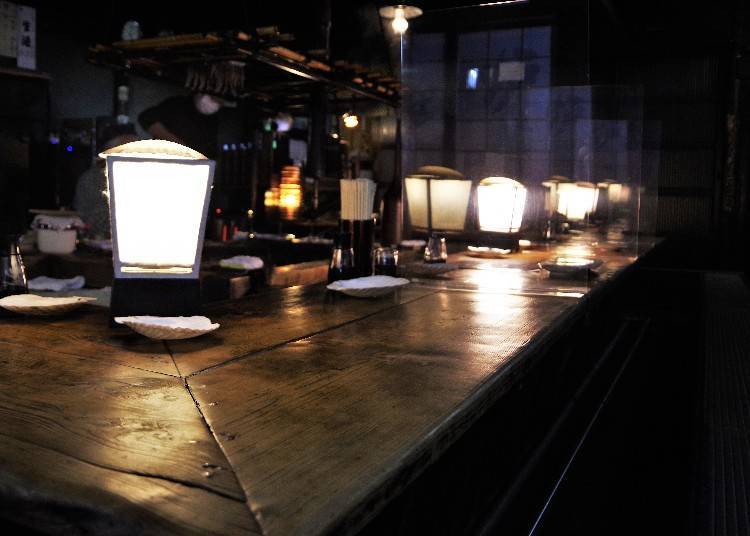
First up: Drinks. This isn't an izakaya (Japanese-style pub), so the number of alcoholic drinks available is limited. But they do offer some of the mainstays, such as beer, highball cocktails, and sake, as well as some soft drinks, including oolong tea and green tea.
The sake available at Robata comes from a Kushiro sake maker called Fukutsuka (福司). You can choose from three different ways to drink it: room temperature, fridge-chilled, or heated on the Irori.
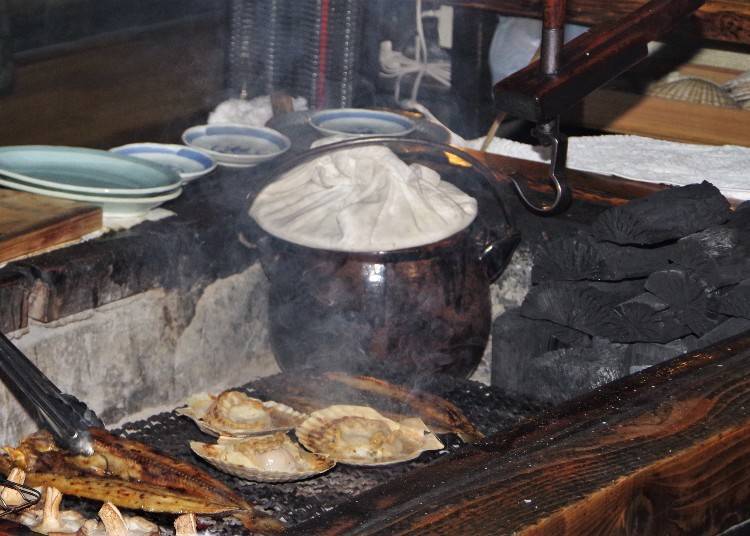
Now let's get to what we came for, the food. Robata's menu is written in both Japanese and English. Parts of the menu also have pictures, making it easy to order without reading Japanese.
However, the prices are not written on the menu. Given Robata's history as a spot for highly-esteemed clientele and group visits, it still follows the founder's traditional idea that showing the price to the customers is embarrassing and rude in front of other guests. This is why the prices aren't clearly visible.
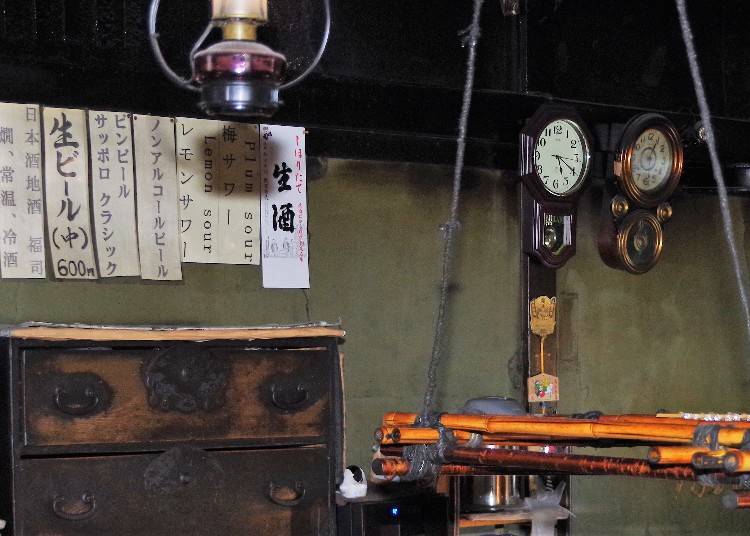
This lack of visible pricing might cause some concern, but don't worry; the staff will let you know the price if you ask.
Prices fluctuate depending on the day, but it seems that seafood is generally around 1,000 yen per dish, vegetables are about 500 to 800 yen, and rice bowls such as the Salmon Roe Rice Bowl are often about 1,300 to 1,500 yen.
However, some of the high-quality fish can cost around 7,000 yen per serving, so if you're not sure, make sure to ask before ordering. Once you've finished your meal, just settle the bill, and you're done. (Robata accepts credit cards.)
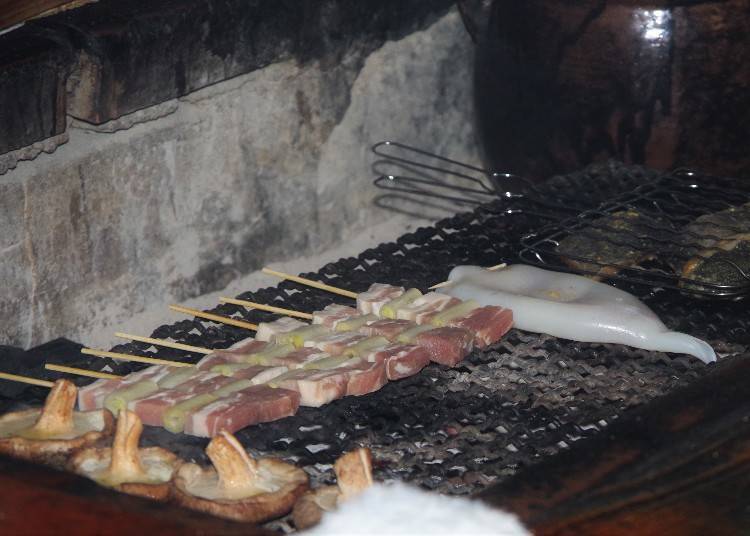
At around the time you receive your drinks at the beginning of the meal, you'll receive an "Otoshi" (お通し).
Otoshi is a part of Japanese food culture, and it refers to the simple dish or dishes that are meant to complement alcohol while you wait for your main dishes to arrive.
Otoshi is synonymous with a seating charge or surcharge. It's something you'll find in most izakaya and traditional restaurants and is not something you can refuse.
In general, this surcharge, or otoshi, can range from 100 yen to 500 yen, depending on the restaurant.
At Robata, it is 500 yen per person. Enjoy your otoshi with some sake or tea, and take some time to relax from the day’s activities while you wait for your main meal.
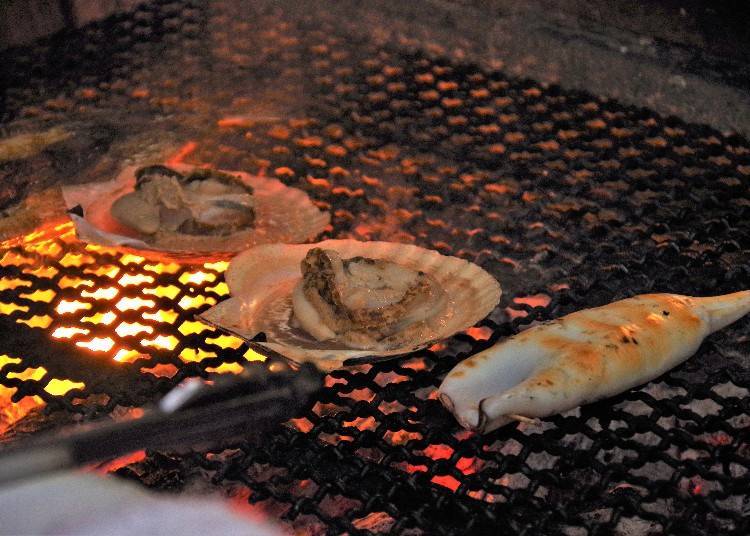
The charcoal mainly consists of oak wood from Tsurui, a neighboring village of Kushiro. Watching the yakite (grill hand) make the food, it's clear that there is a lot of skill involved.
From the charcoal's placement to the heat control, and timing of the cooking to the arrangement on the grill, there seem to be rules and techniques that can only be mastered by sitting in front of the Irori day in, day out.
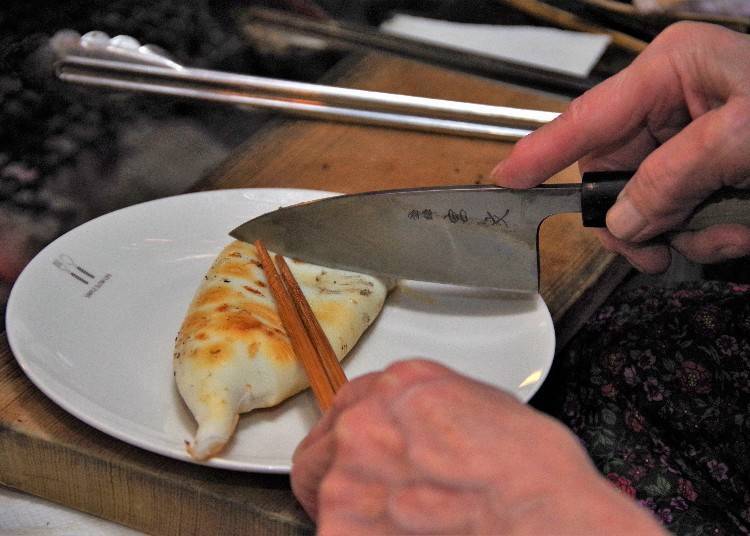
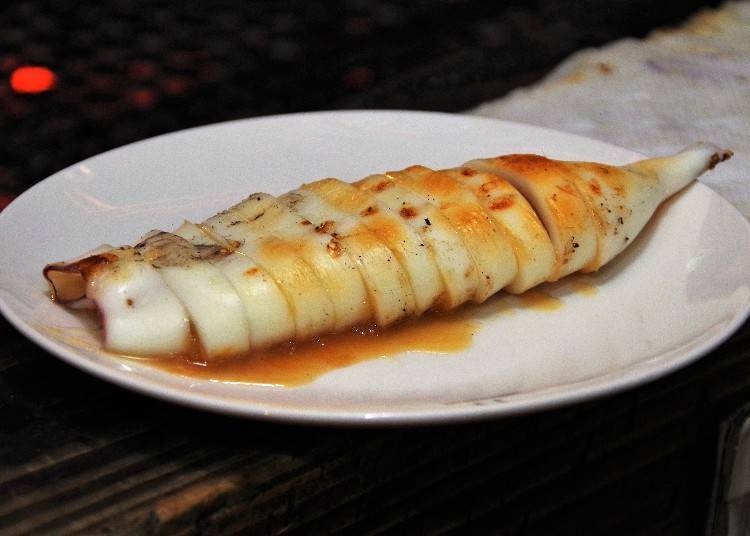

Get your chopsticks ready to dig into the freshly grilled food. The dishes are seasoned with salt and soy sauce just before serving, so everything is well-seasoned and delicious just the way it is. But if you fancy a slightly more robust flavor, you can add soy sauce from the counter to your liking. How you eat it is up to you!
Each dish is surprisingly filling, so it's best not to order too much at once. If you're still hungry, it's always possible to order more as you go.

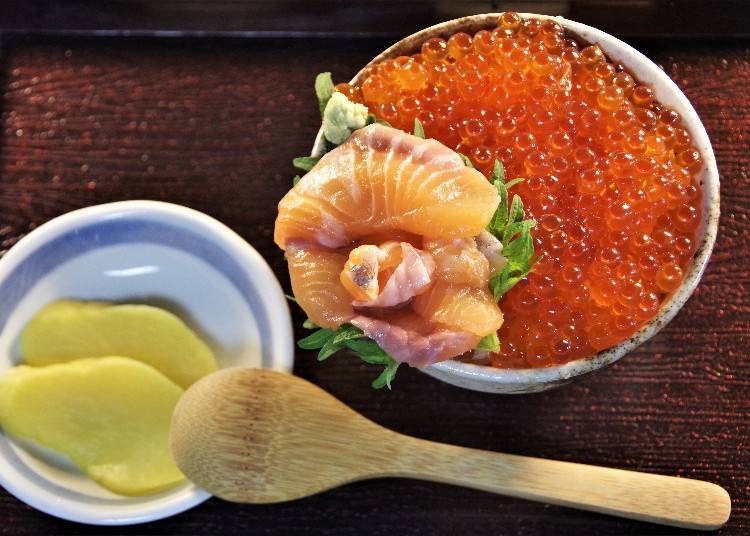
Health & Safety Measures
The restaurant and its facilities currently undergo:
・Cleaning
・Disinfection
・Placement of hand sanitizer
・Disinfection between customer sittings
・Use of coin trays and tongs for hot towels
・Table partitions
・Staff are required to wear masks, wash their hands, sanitize, gargle, and check their temperature
・Customer seating is well distanced
・Reservations and seats are limited
・Customers with any relevant symptoms will be refused entry
・Customers are asked to wear a mask
-
Robata炉ばた
- Address 3-1 Sakae, Kushiro, Hokkaido, 085-0013
- Phone Number 0154-22-6636
・Hours: 5:00 p.m. - 11:00 p.m.
・Closed: Sunday
・Irregular holidays during the following periods: February, April to May, August to October
*Please note that opening hours and other factors may change in response to COVID-19.
The real pleasure of Robatayaki lies in the fact that you can watch the skilled yakite cook fresh fish and tasty dishes right before your eyes, all in the calm atmosphere of a traditional Japanese setting. The excitement of watching your food get cooked in front of you makes that first bite all the more satisfying. The dishes are expertly cooked and go perfectly with alcohol, too. Overall, Robatayaki is a great way to truly experience Japan's food culture.
Original text by: Nobuka Kawashima
Translation by: Cassandra Lord
*This article is based on information correct as of March 2022. Please check the official website for the latest information.
- Area
- Category
*Prices and options mentioned are subject to change.
*Unless stated otherwise, all prices include tax.
Limited time offer: 10% discount coupons available now!
Recommended places for you
-
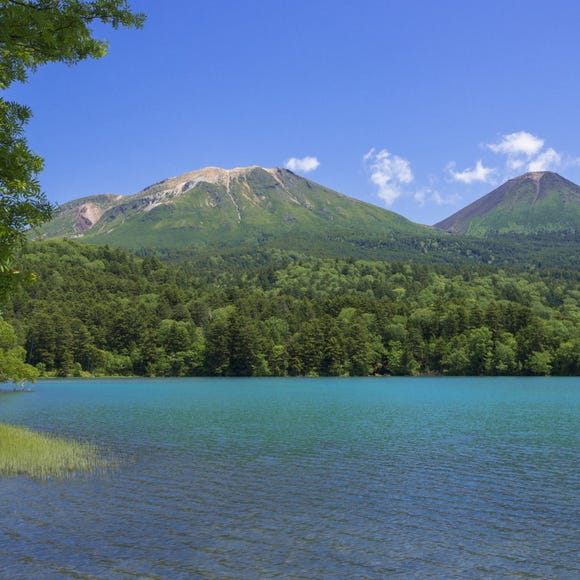
LakeAkan
Rivers, Lakes & Canyons
Abashiri
-
Appealing
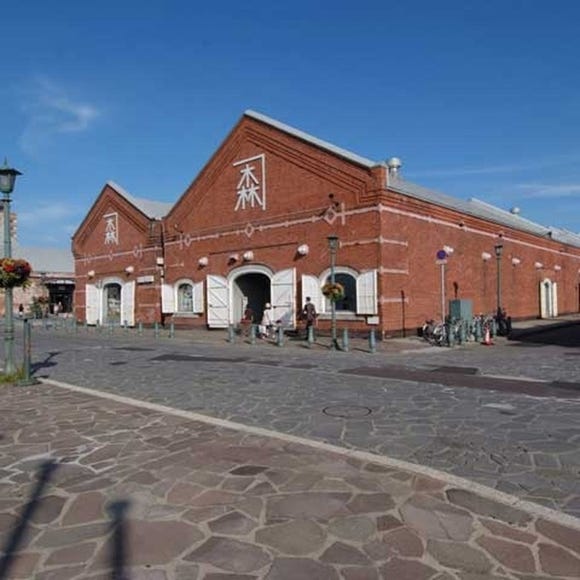
Kanemori Red Brick Warehouse
Shopping Malls
Hakodate
-
Appealing
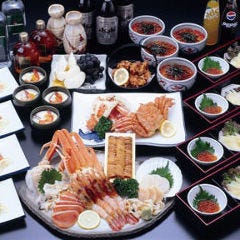
Rukku and Uohei
Izakaya
Sapporo / Chitose
-

Sapporo Clock Tower
Landmarks
Sapporo / Chitose
-
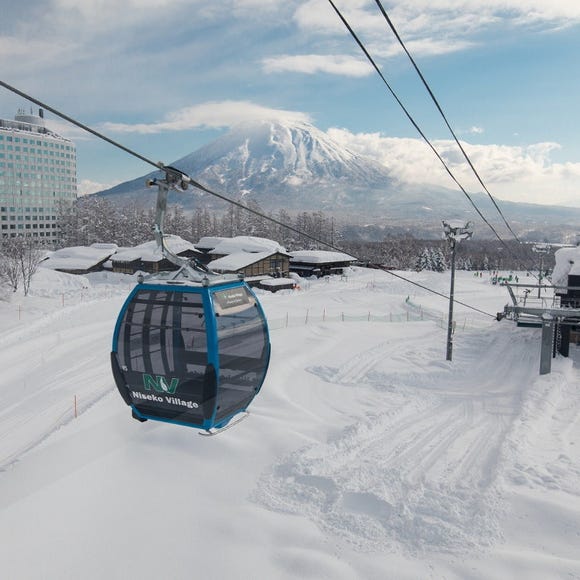
Niseko Village Ski Resort
Skiing & Snowboarding
Niseko / Rusutsu
-
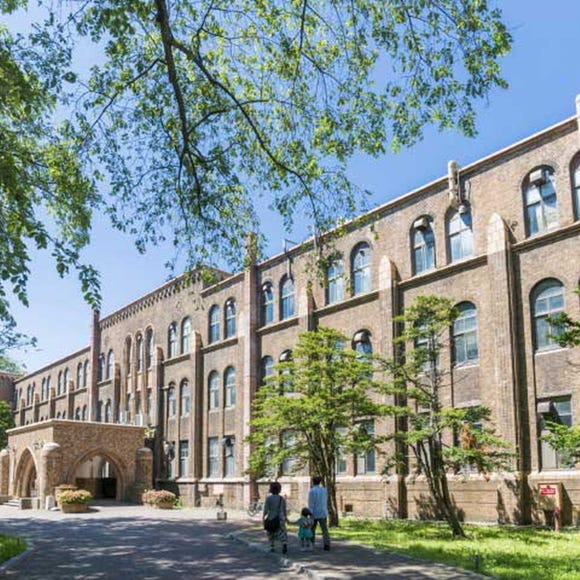
Hokkaido University
Other Architecture
Sapporo / Chitose
-
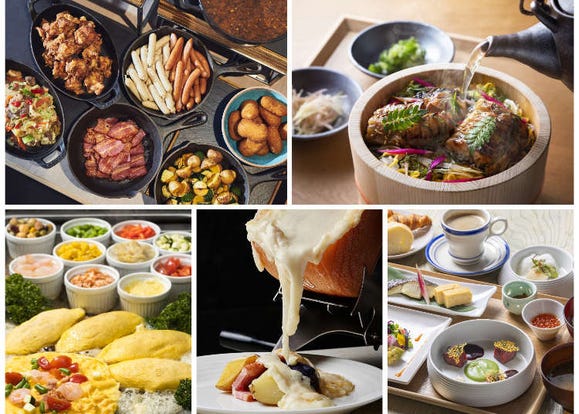
Expert-Recommended! 5 Sapporo Hotels with Great Breakfasts
-
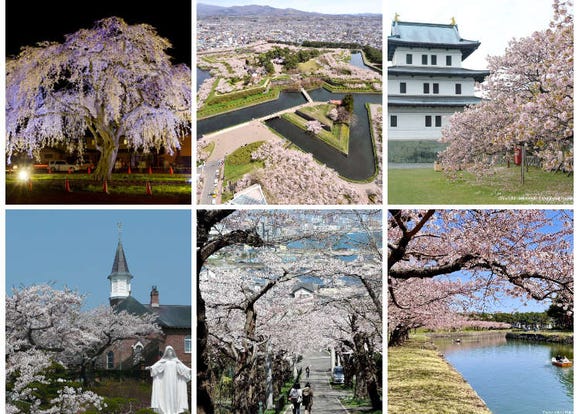
Complete Guide to Cherry Blossoms in Hakodate & Southern Hokkaido (Best in Early May)
-
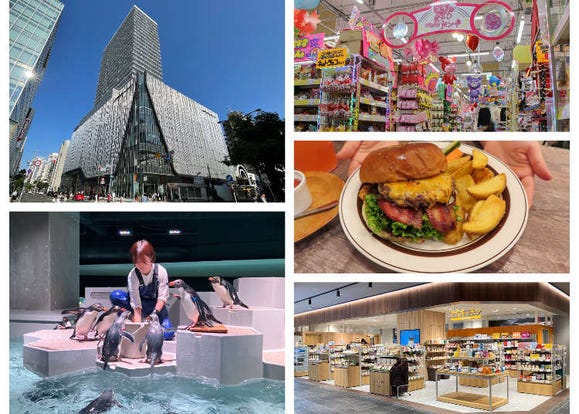
Exploring Moyuk Sapporo: A New Tanukikoji Landmark with an Aquarium and New Donki Store!
-
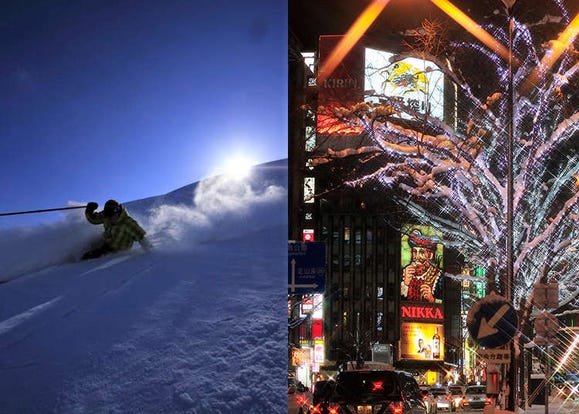
1-Day Winter Adventure in Sapporo (Hokkaido): Enjoy Snow by Day, Food by Night!
-
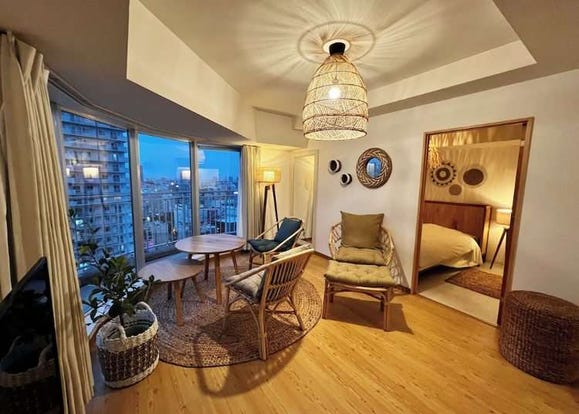
Family-Friendly Accommodations: 5 Recommended Apartment Hotels in Sapporo (Hokkaido)
-
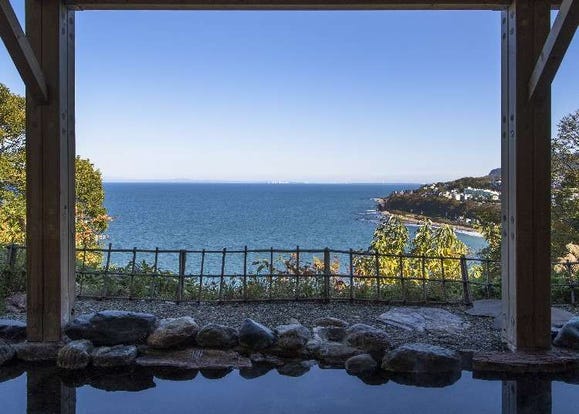
Travel Expert-Recommended! 5 Onsen Hot Spring Hotels & Inns in Otaru (Hokkaido)
-
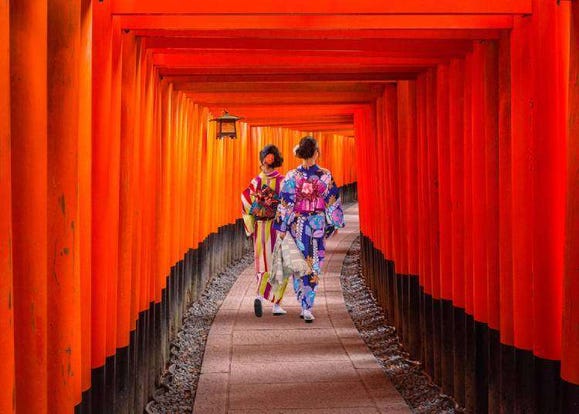
10 Major Cities in Japan: Which One Should Top Your Bucket List?
-

Japanese Seaweed: All About 6 of Japan’s Most Popular Varieties!
-
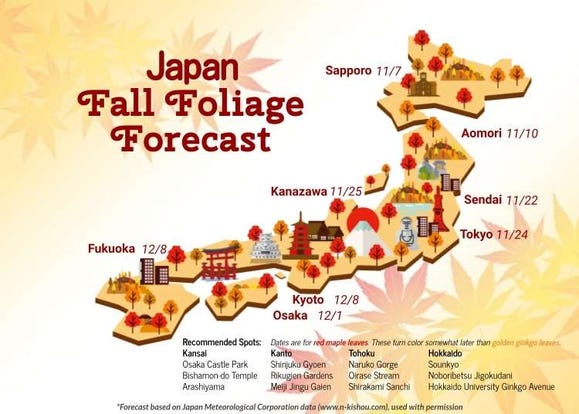
Autumn in Japan 2024: Fall Foliage Forecast & Where to Enjoy the Colorful Leaves (+Tour Info)
-

All-you-can-eat 'Jingisukan' and Delicious Dining at Sapporo Beer Garden
-

Treat Yourself! Cheeky Japanese Delights From Hokkaido
-
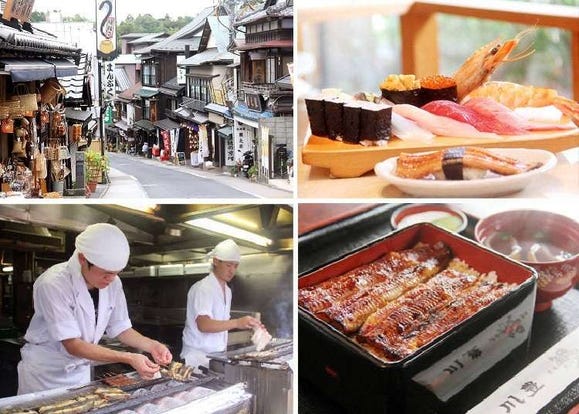
(Video) Walking Tour along Narita Omotesando - Quaint Historical Village near Narita Airport!
- #best sushi hokkaido
- #things to do hokkaido
- #best ramen sapporo
- #what to bring to japan
- #new years in tokyo
- #what to buy in ameyoko
- #japanese nail trends
- #what to do in odaiba
- #onsen tattoo friendly tokyo
- #daiso
- #best sweets otaru
- #japanese fashion culture
- #best nature furano
- #japanese convenience store snacks
- #best japanese soft drinks












